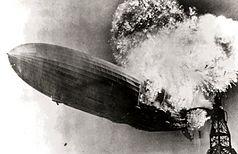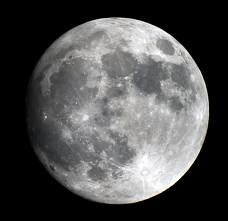
The idea behind that statement seemed quite simple to me. I knew helium to be a rare gas which is rather difficult to come by. It's largely extracted from a few natural gas wells in Texas, where it's mixed into the gas in tiny quantities. In the years prior to World War II, it was declared a critical material by the United States, which refused to sell any to Germany.
But apart from blimps, helium is critical in another way. Liquefied helium is the coldest substance we are able to make, about four Celsius degrees above absolute zero. It's the only way to produce certain low temperature superconductors, and temperatures low enough for other significant scientific research. Someday, I thought, perhaps the helium in the wells of Texas will run out. What will happen to low-temperature research then? Given the consequences, the use of helium to fill party balloons seemed rather stupid. When I did a little bit of research, I found that party balloons are actually responsible for only a tiny fraction of our use of helium. Far and away the most helium goes into a welding technique called "Heliarc welding", a form of tungsten inert-gas welding in which a blanket of inert helium (or sometimes argon) is used to exclude air from a welding arc. The helium which is used in that way is simply released to the atmosphere, and effectively lost. So I think my statement about squandering helium actually made quite a bit of sense, although my family seemed to view it as another one of those oddball things that Larry says from time to time. I still think we shouldn't be squandering our helium, and my family did note when an article appeared a number of years later with the title, "Scientists warn world's supply of helium close to depletion" (Boston.com, October 17, 2010). I sent a link to this article to family members, with the Subject line, "Vindicated!" Since then, quite a few articles have appeared addressing this issue. Note 1
Well, tides are due to the gravitational pull of the moon on the water in the Earth's oceans. The moon pulls a bulge of water up underneath it, and then drags that bulge along as it orbits. But that bulge of water must pull backwards on the moon, slowing it in its orbit. I concluded that the energy of the tides has to come at the expense of the orbital energy of the moon. This would gradually drag the moon into a lower orbit, closer to the earth. That conclusion implies that the moon would eventually crash into the earth, which would obviously be an extremely catastrophic event. I assumed that this eventuality would have to occur extremely far in the future, since obviously nobody was worrying about it. In this case, however, I was not vindicated. I was wrong. It turns out that the orbit of the moon is not getting lower and lower. Instead, it's doing the opposite: the moon is gradually moving into a higher (and also higher energy) orbit! So where is the energy for this (and for the tides as well) coming from? These days we have Google and other search engines, so it's possible to answer questions like this rather easily. The moon circles the earth in the same direction that the earth rotates (counter-clockwise, if you're looking down on the North Pole). So when the moon's gravity pulls up a bulge of water, the Earth's rotation pulls that bulge ahead of the moon. Thus the gravitational attraction of the bulge pulls the moon forward, rather than retarding its revolution around the earth. The effect is to speed up the moon - that is, to feed energy into the moon's orbit. Since it's the Earth's rotation that's doing the pulling, energy is taken from the angular momentum of the earth. This results in a gradual slowing of the earth's rotation, making each day slightly longer than the last. While this is a small effect on a human scale, it's hardly negligible in the long run. The moon is getting about 3.8 cm further from the Earth every year. In the early Carboniferous period (around 350 million years ago), a day–night cycle was less than 23 hours long. Note 2 In any event, we don't have to worry about the moon crashing into the earth. An asteroid, maybe, but not the moon. Now don't get me started about reversals in the Earth's magnetic field.
  Note 1: Here are a couple of subsequent Boston Globe articles that have appeared on the subject: Dwindling stockpile of helium causes concerns, May 20, 2012 Helium shortage is no laughing matter, May 29, 2012 [return to text] Note 2:
These numbers are from a good Scientific American article on the subject, "Fact or Fiction: The Days (and Nights) Are Getting Longer" [return to text]
 |
 That's why the zeppelin Hindenburg was filled with hydrogen instead of helium, which was what allowed it to catch fire and burn in New Jersey. Being an inert gas, helium can't burn.
That's why the zeppelin Hindenburg was filled with hydrogen instead of helium, which was what allowed it to catch fire and burn in New Jersey. Being an inert gas, helium can't burn.
 I had another concern a number of years ago, relating to the moon. Obviously, there's a great deal of energy in the tides. Although it's spread out and hard to tap, it can be done. But even if we don't tap tidal energy, it's still there, accounting for the daily movement of absolutely massive amounts of water. Where is the energy to move all that water coming from?
I had another concern a number of years ago, relating to the moon. Obviously, there's a great deal of energy in the tides. Although it's spread out and hard to tap, it can be done. But even if we don't tap tidal energy, it's still there, accounting for the daily movement of absolutely massive amounts of water. Where is the energy to move all that water coming from?